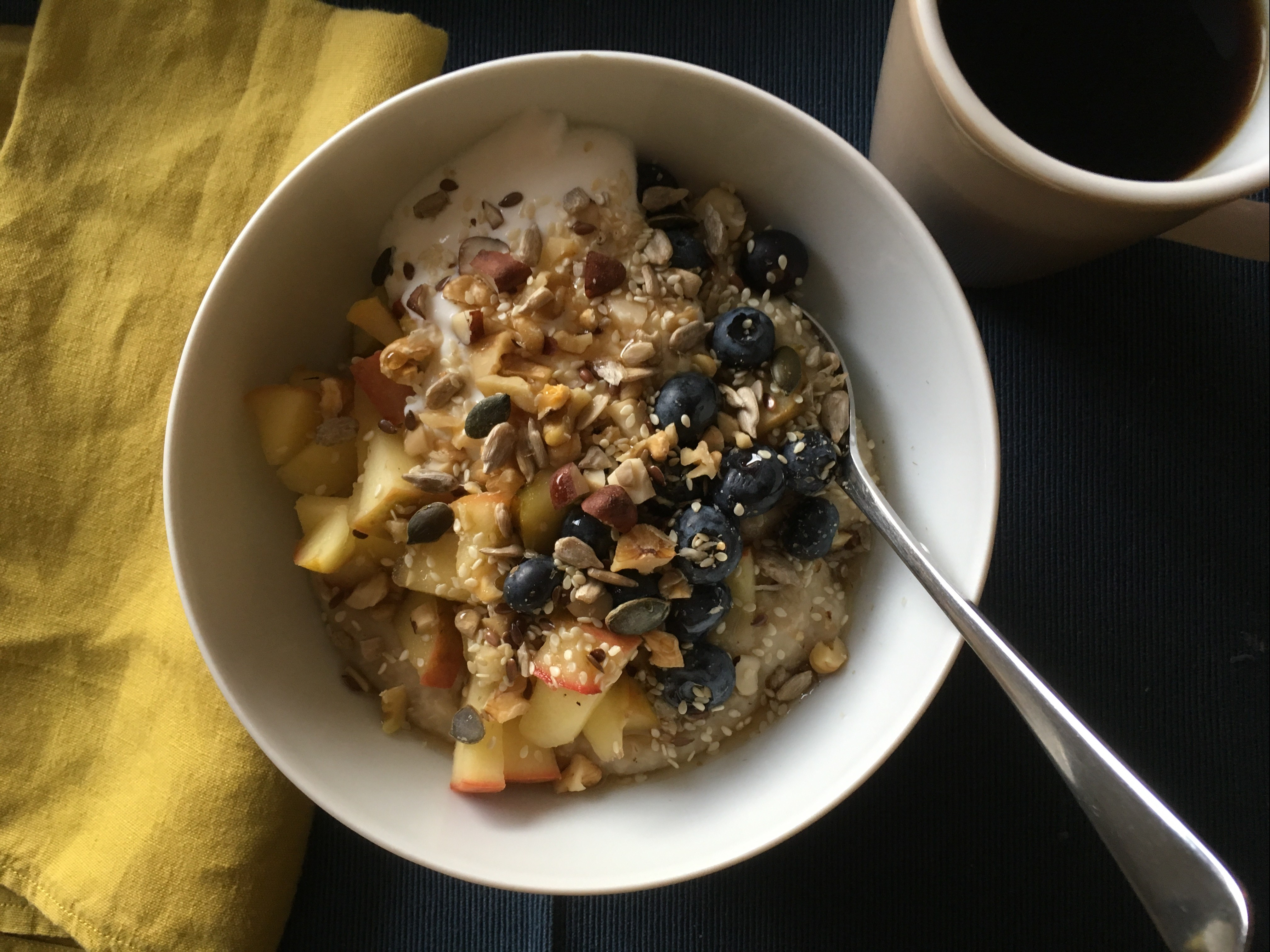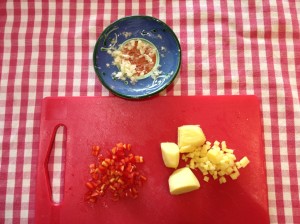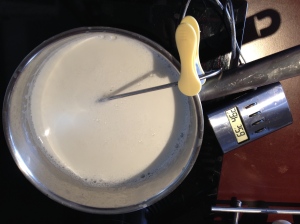The damson tree on my balcony gives me much joy, from its early white blossom through to the seductive dark bloom of the crop. I am sure the little tree would prefer to have its roots deep in the earth but until the day when I manage to get an allotment I will try to keep it going in its big pot. As well as being delicious in crumbles and tarts, damsons make one of my favourite jams – not too sweet, yet darkly luscious on toast or crumpets and good in a bakewell tart too. Damsons have lots of pectin so I have found it straightforward to make. I also like using a mix of damsons and blackberries.

Given the size of my crop, I only make jam in small quantities – gone are the days of processing tens of kilos of damsons produced by the mature tree in a previous home. My tree is Farleigh, which crops late (mid-September), but this year I have picked the fruit rather early – they were starting to fall and I didn’t want to lose them to the pigeons. These quantities make two jars but can obviously be multiplied up if you have more damsons. I have kept some of mine back for the freezer for puddings later in the year. I have been experimenting with reducing the sugar content and have gone down as low as 360g, which was also fine, so adjust to suit your taste. Using less sugar probably means that the jam wouldn’t keep quite as well, so may not be a good idea if you’re making a big batch for the store cupboard.
You will need two jam jars with lids that have been sterilised for 20 minutes in a low oven or by being immersed in boiling water plus greaseproof circles for the top of the jam; decorative gingham tops and fancy labels are optional. However, what is important in my view is a thermometer. I’ve tried all that business with testing jam on saucers in the freezer and never found it satisfactory – by the time you’ve decided the stuff in the saucer is set the rest of it is over-cooked. If you want to make jam just splash out a fiver and get a thermometer. I find I use mine for lots of other stuff too (making custard for example).
- 450g damsons (or mixed damsons and blackberries)
- 400g granulated sugar
- 75ml cold water
Wash the damsons and remove any stems or leaves. Put into a large metal pan with the cold water and bring up to a simmer. Cook for about 10-15 minutes until the fruit has burst and softened. At this point the stones should have released from the flesh and you will be able to see them swimming to the top of the mixture like little red fish. At this stage I pull the pan off the heat and leave it to cool down so that I can pick out the stones. You could sieve the fruit, but that gives you a different texture, and I find it easy enough to fish the stones out by hand – use a disposable glove if you don’t want stained fingers. I never manage to get quite all of them at this stage, but usually manage to spot the escapees later before they get into the jar. If I’m using blackberries too I add them after I’ve removed the stones, as they cook pretty quickly.
Reheat the fruit over a moderate heat and add the sugar, stirring assiduously until it has all dissolved. I use a heat-proof spatula to scrape any sugar or juice from the side of the pan back into the jam at this stage to be sure that there are no remaining sugar crystals.
Now turn the heat up, bring the jam to the boil and cook without stirring until it reaches 105C. This should only take 5 minutes or so with this quantity, so start testing the liquid with the thermometer after just a few minutes, keeping your hands well away from the scalding jam. As soon as it has reached temperature pull the pan off the heat and leave it to settle for 10-15 minutes, skimming off any scum.

Set the sterilised jars on a tray, in case of spills, and carefully pour the jam into them. Cover with the greaseproof circles and lids and allow to cool. I keep this in the fridge once the jar is open.






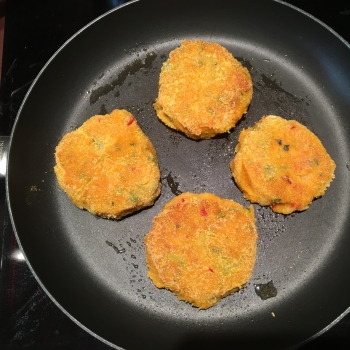

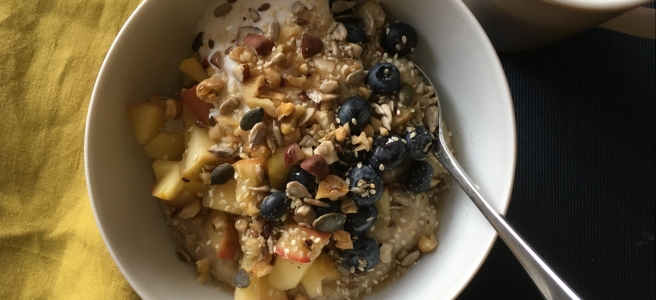

 In the morning, you will find it has thickened and looks much more promising. Gently bring the pan back to a simmer, stirring diligently. Don’t forget to stir the porridge when you put it back on the heat, or it will, I promise you, stick and burn (I made this mistake – once!). Then put the timer on for 6 minutes, and busy yourself with making coffee or apple compote (see below), turning back to stir the porridge every couple of minutes. You may need to turn the heat down so that it stays at a steady simmer and doesn’t erupt into an angry impersonation of the mud baths in
In the morning, you will find it has thickened and looks much more promising. Gently bring the pan back to a simmer, stirring diligently. Don’t forget to stir the porridge when you put it back on the heat, or it will, I promise you, stick and burn (I made this mistake – once!). Then put the timer on for 6 minutes, and busy yourself with making coffee or apple compote (see below), turning back to stir the porridge every couple of minutes. You may need to turn the heat down so that it stays at a steady simmer and doesn’t erupt into an angry impersonation of the mud baths in 